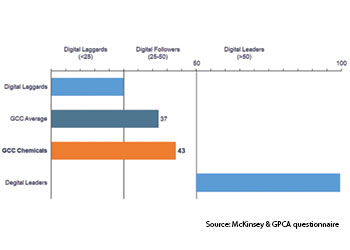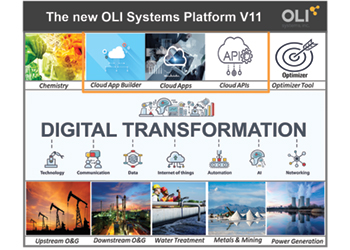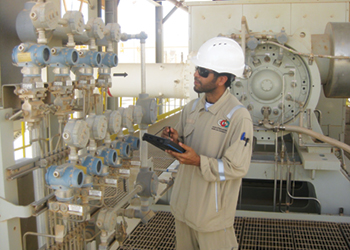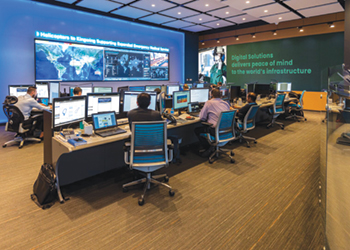
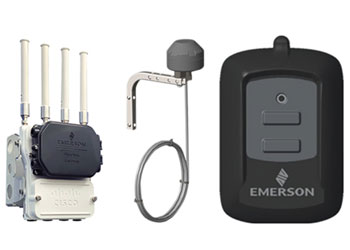
The oil and gas industry has challenges and requirements related to asset monitoring, process and people in each of the three streams — upstream, midstream, and downstream.
Many use cases and solutions address key challenges in these sectors, such as wellhead monitoring for production optimisation, corrosion and erosion monitoring for integrity, location awareness and H2S monitoring for safety, asset monitoring for reliability, PRV (pressure relief valves), and steam trap monitoring for energy efficiency in addition to basic measurements such as pressure, temperature, level, acoustics, and others.
'Over the last 13 years, the industrial automation space has witnessed a great deployment of wireless solutions and the demand for industrial wireless protocols continues to grow. The question posed to all industries planning for the future: Which is the best suited wireless infrastructure to invest in?' Thomas Vinu, Senior Manager - Pervasive Sensing MEA at Emerson asks.
In the wireless infrastructure planning process, it’s important to consider the following high-level selection criteria:
• The solution must fit into the existing site security architecture.
• The wireless infrastructure must meet site-specific product certifications.
• To maximise the infrastructure investment, the wireless technology must meet current application needs as well as future use cases.
• Flexibility in deployment, to ensure the solution fits with the diverse architectures unique to each process facility.
• The solution must integrate with existing IT/OT network management practices.
As there is no single wireless protocol that exists today suited to all these criteria, process facilities are broken down into field and plant networks due to the unique features required for each network and to deliver operation analytics which requires seamless integration.
Focusing on some of these industrial automation features, there are a few features common to both the field network and plant network. These include security, reliability, and interoperability.
At the same time, drivers for the separation in wireless protocols are the unique features required:
• Field network: The update rate of the field device must provide flexibility to support a range of applications like PRV monitoring or location awareness where some applications require four -seconds, and others eight seconds or higher.
• Plant network: The data rate is an important factor when looking at high data rate applications like video backhaul and mobile workforce.
When breaking down these protocols based on industrial automation features required, users end up with leading protocols designed for their intended purpose and what is most important is that they work together.
Therefore, Emerson and its long-term partner Cisco, continue to deliver next-generation wireless access points. This solution brings together leading plant and field network protocols to further enable site-wide pervasive sensing and analytics.
 |
Vinu ... overcoming challenges |
Wireless Plant Network (WPN) enables wireless infrastructure in the plant environment to help implement the Industrial Internet of Things (IIoT) strategy. This allows the installation of solutions like personal location detection, safety mustering, field data backhauling, and more.
Aiding this process, Emerson and Cisco co-developed the solution combining Cisco Next-Gen Wi-Fi access point and Emerson Next Gen gateway, incorporating these highlights: modular and compact design; WirelessHART, ISA100, and Wi-Fi capabilities; capability with 200 WirelessHART and ISA100 devices; with 802.11 AC Wave 2, IP67 rated with HazLoc Class 1 Division 2 approvals.
The next generation of wireless gateways is Emerson’s new 1410S Gateway. Wireless has been around for 13 years; current gateways have supported the industry for over a decade. Wireless measurement technology grew rapidly, and the size and complexity of existing wireless infrastructures continue increase.
Upgrading from other existing protocols to WirelessHART or expanding on already developed WirelessHART networks can be complex and expensive. Therefore, the new 1410S Gateway allows seamless integration of over 200 WirelessHART devices and 100 ISA100 devices on one Emerson gateway network. This allows for the support of existing ISA100 networks while upgrading to a WirelessHART network.
The next gen 1410S gateway will incorporate further features and benefits, such as upgraded hardware with power over ethernet capabilities for all models and installed intrinsically safe barriers for the product use in hazardous areas. It will also have enhanced security through advanced verification mechanisms, further maximizing data safety.
Both CISCO IW6300 Access Point, Emerson 1410S combined WirelessHART and ISA100 Gateway enable wireless plant networks, bringing the highest value of IIoT to the customers and the facilities with IT security, interoperability, reliability, and scalability, he says.






















































































